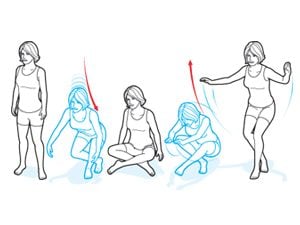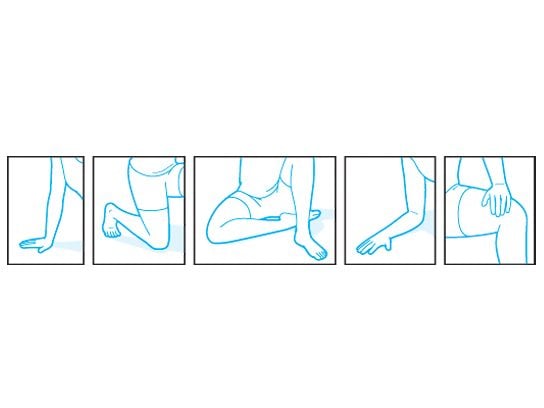Can You Pass the Longevity Test?
Updated: Apr. 16, 2016
This deceptively simple measure of flexibility and strength can predict if you will have a long life.

Sit. Stand. Repeat. The trick: You can’t use your hands. This deceptively simple measure of flexibility and strength can predict who will live longer, according to a study by Brazilian physician Claudio Gil Araújo.
The study came about when Dr. Araújo noticed that many of his patients, particularly older people, had trouble with ordinary motions such as bending down to pick up something from the floor. As people age, he knew, reduced muscle power and loss of balance could greatly increase the risk of dangerous falls.
So Dr. Araújo and his colleagues developed the sitting-rising test, or SRT, to determine a person’s core strength, flexibility, and longevity.
Try It!
• Stand with bare feet in a clear space.
• Lower yourself to a sitting position on the floor, trying not to use your hands, knees, forearms, or the sides of your legs.
• Now stand back up, again without leaning or using your limbs for help.
Scoring (ten-point scale)
• SITTING: Start with five points. Subtract one point each time a limb is used for support. Subtract half a point for loss of balance.
• STANDING: Add five points to your “sitting” score. Now subtract points per rules above.
• RESULTS: According to Dr. Araújo, people who scored fewer than eight points on the test were twice as likely to die within the next six years compared with those who wound up scoring higher; those who scored three or fewer points were more than five times as likely to die within the same period.
Avoid!
Using limbs for support (seen below) as you move from sitting to standing and back again detracts from your final score. The goal is to maintain balance from your core.
